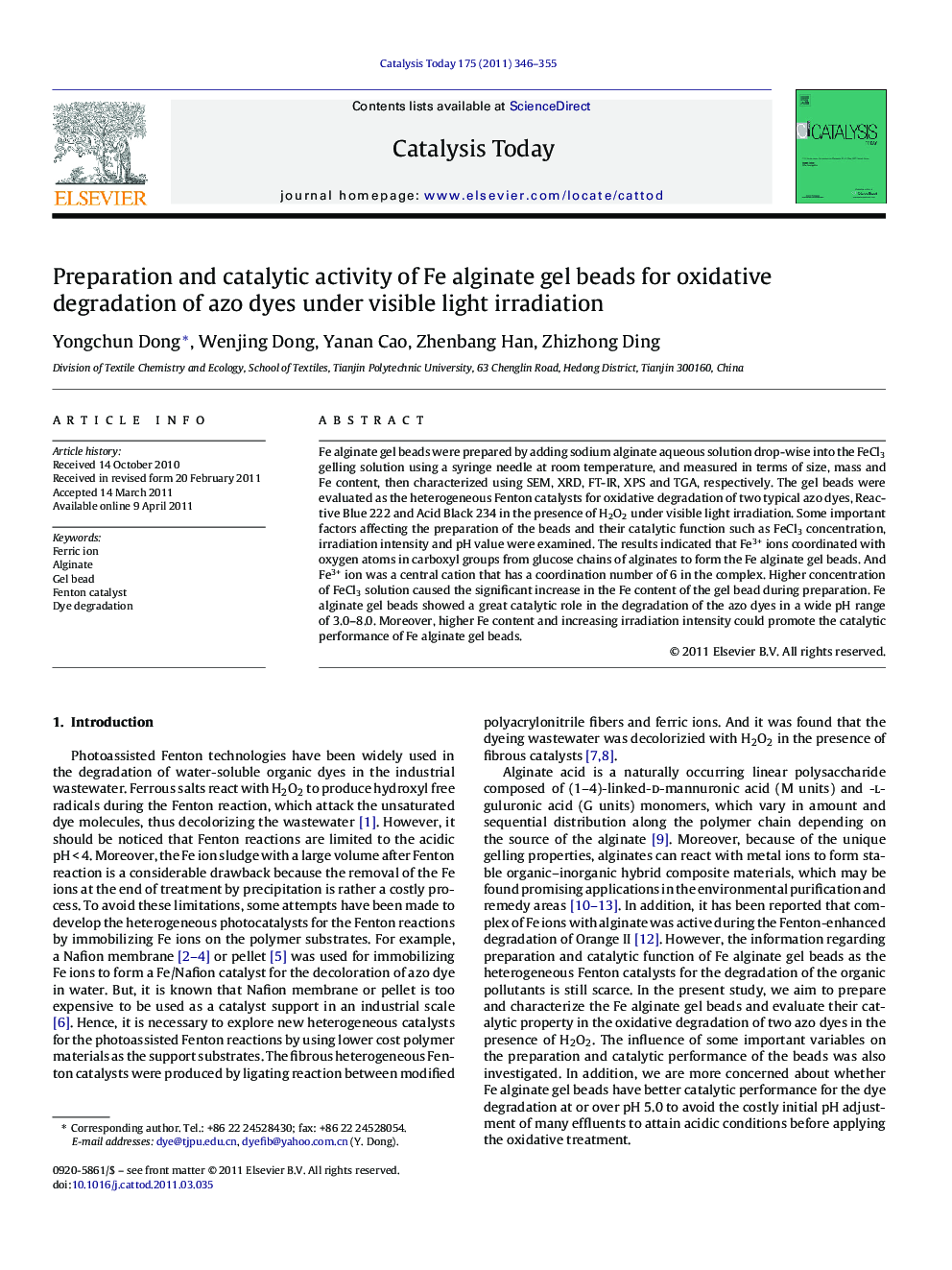| Article ID | Journal | Published Year | Pages | File Type |
|---|---|---|---|---|
| 55761 | Catalysis Today | 2011 | 10 Pages |
Fe alginate gel beads were prepared by adding sodium alginate aqueous solution drop-wise into the FeCl3 gelling solution using a syringe needle at room temperature, and measured in terms of size, mass and Fe content, then characterized using SEM, XRD, FT-IR, XPS and TGA, respectively. The gel beads were evaluated as the heterogeneous Fenton catalysts for oxidative degradation of two typical azo dyes, Reactive Blue 222 and Acid Black 234 in the presence of H2O2 under visible light irradiation. Some important factors affecting the preparation of the beads and their catalytic function such as FeCl3 concentration, irradiation intensity and pH value were examined. The results indicated that Fe3+ ions coordinated with oxygen atoms in carboxyl groups from glucose chains of alginates to form the Fe alginate gel beads. And Fe3+ ion was a central cation that has a coordination number of 6 in the complex. Higher concentration of FeCl3 solution caused the significant increase in the Fe content of the gel bead during preparation. Fe alginate gel beads showed a great catalytic role in the degradation of the azo dyes in a wide pH range of 3.0–8.0. Moreover, higher Fe content and increasing irradiation intensity could promote the catalytic performance of Fe alginate gel beads.
Graphical abstractFe alginate gel beads as the novel heterogeneous Fenton catalysts have shown better photocatalytic ability for oxidative degradation of two azo dyes (Reactive Blue 222 and Acid Black 234) in water under visible irradiation, and increasing irradiation intensity can significantly promote the catalytic performance.Figure optionsDownload full-size imageDownload high-quality image (210 K)Download as PowerPoint slideHighlights► Fe alginate gel beads are prepared by gelling of sodium alginate in FeCl3 solution. ► Their Fe content increases with the concentration of FeCl3 solution increasing. ► The gel beads are used as the effective heterogeneous Fenton catalysts. ► High Fe content and visible irradiation cause the catalytic activity of the beads. ► Fe alginate gel beads show higher stability in a wider pH range.
